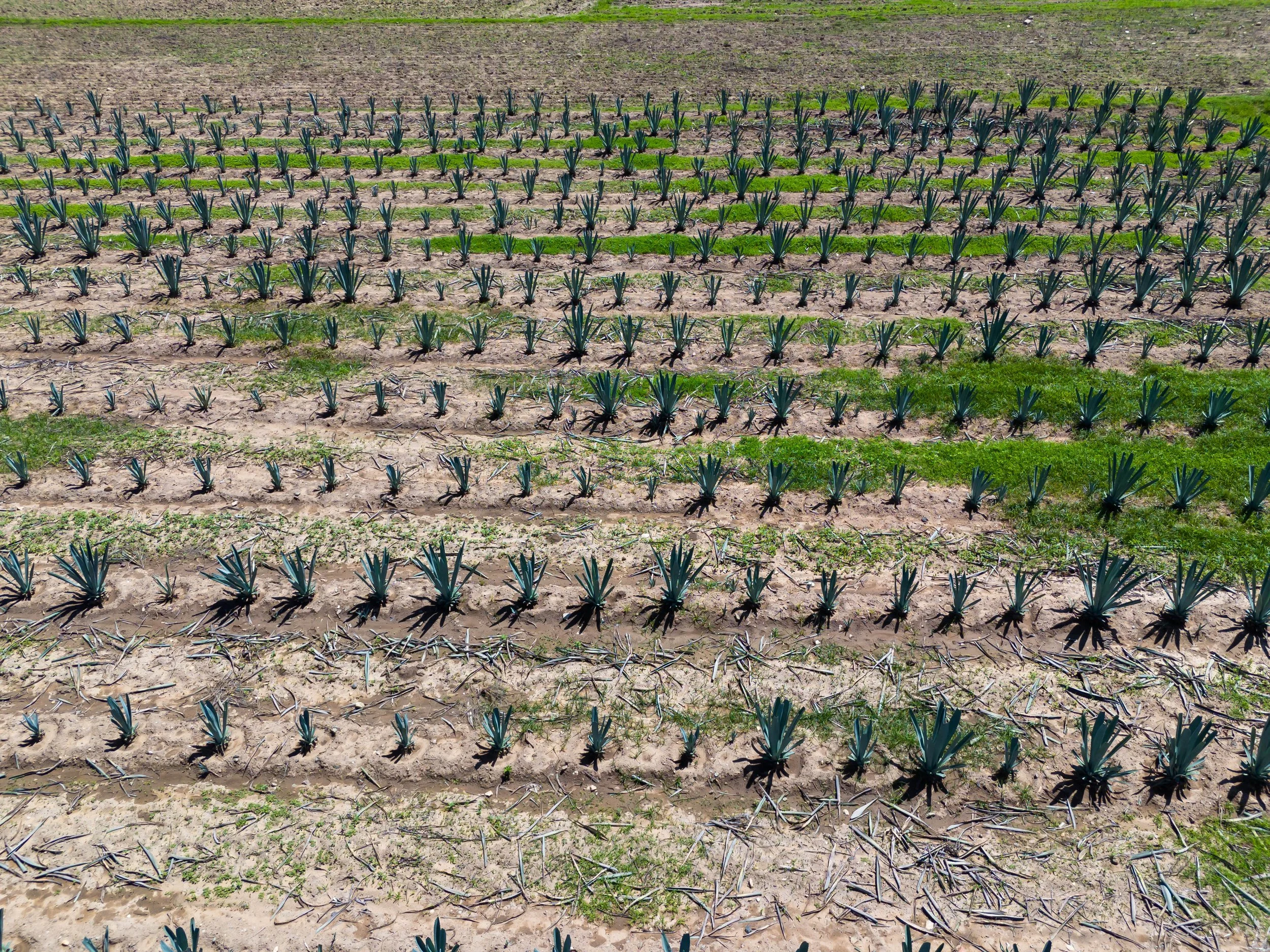
agave syrup
The Land
Agave is a genus of succulent plants native to the warm, arid regions of the Americas and the Caribbean. Within this genus, 210 species have been identified worldwide, 159 of which grow naturally in Mexico and 119 are endemic to the country. Only the Tequilana species dominates the agave global industry.
Tequilana species is preferred for its rapid growth, high yield, and high sugar content, allowing for regulated and large-scale production.
The quality and characteristics of products derived from the Tequilana are exclusively due to a specific geographical area, primarily the state of Jalisco, Mexico.
The Process
Within this exclusive region, a worker cooperative with more than half a century of experience has developed an excellent sweetening alternative.
Mature agave plants (usually between 7 and 10 years old) are harvested by removing the stalks to expose the core. This core is crushed and pressed to extract sap, which is filtered to remove any solids.
The filtered sap is then hydrolyzed at a temperature of between 42 and 48°C, which breaks down the complex carbohydrates into simple sugars and preserves its nutrients.
The hydrolyzed product undergoes another filtration stage and is reduced to obtain the final product, Agave Syrup.
The Product
It is a syrupy liquid, which when derived from the Tequilana species is generally cleaner and sweeter. Fructose predominates in its carbohydrate classification.
For this reason, it can be 1.3 to 1.5 times sweeter than table sugar with a high binding factor, as it is a lighter liquid than honey, highly soluble, and does not crystallize.
These characteristics have allowed it to replace traditional sugar in a wide range of recipes and formulas due to its low glycemic index.
Furthermore, its origin and production methods position it as a preferred ingredient in raw vegan diets. Available in bulk industrial packaging sizes.

